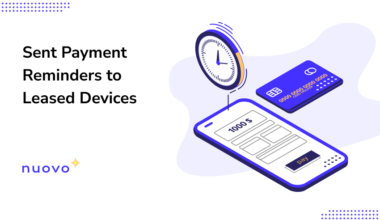Introduction
Smartphones are an essential part of today’s modern world. Mobile phones began their journey way back in 1994 in the form of IBM’s SPC (Simon Personal Communicator) – the world’s first mobile phone, which further led to the introduction of the very first smartphone compatible with 3G internet in 2001 and finally revolutionized the way our world functions today with the path-breaking introduction of Apple’s first-ever iPhone in 2007, followed by the launch of Google’s Android smartphone. Since then, there has been no turning back.
What started as a means of simplified and quick communication has now become a necessity. According to recent statistics, 6.64 billion people, that is, 83.72% of the world use smartphones. A majority of the world cannot imagine living without a smartphone. Be it for personal use, or for professional purposes, smartphones combined with internet services have ushered in an era of seamless connectivity and knowledge.

Running a business remotely, obtaining world-class education, staying in touch with people from various parts of the world has become possible due to the wide adoption of smartphones. The urbanized world is experiencing newer benefits of the smartphone as we progress towards better technology. However, there is still a section of the world, which struggles to lay its hands on even the most basic mobile phones. Smartphone ownership is increasing in the world, but not consistently.
Smartphone Ownership: The Digital Divide
Global smartphone adoption is on a constant rise. People all over the world are experiencing the benefits of the internet at their fingertips through their smartphones. However, the underserved regions of the world including some of the developing countries are far from this transformation. Many areas of the world do not have access to the internet even today. Many parts of the world don’t even own basic mobile phones.
The underserved territories of the world are technologically backward due to various challenges. The first and foremost challenge is the cost of digital devices. According to a 2019 report, a median of 51% out of people surveyed in 11 developing countries said the cost of a mobile device is a reason they do not own a mobile phone. Economically poor countries find it difficult to afford the current smartphone prices, with additional data costs. Furthermore, there are many other vital challenges such as illiteracy, lack of linguistic skills or technical knowledge to operate digital devices, as well as skepticism related to the security of the information stored on smartphones.
Such barriers have created a digital divide in the world where on one side, people depend on smartphones heavily for their daily operations such as business communication, enterprise mobility, online education, remote health consultations, socializing with people from various parts of the world, etc. while the other part of the world remains left behind.
This is where the concept of smartphone financing enters as a revolutionary approach.
Smartphone Financing: A Game-changer
The underserved areas of the world lack access to high-speed connectivity and global information due to their smartphone unaffordability. However, another way to look at it, is that these regions present a potentially large market for the smartphone industry. To tap this uncharted territory and help bridge the gap between the digitally divided worlds, the concept of smartphone financing has recently come into being.
Smartphone financing is an initiative taken by the financing companies, equipment manufacturers or resellers. It is a scheme that allows users to purchase the latest smartphones with their payments spread out in the form of periodic installments. This way, users do not need to burn a hole in their pockets to purchase smartphones, they can instead access the latest technology in an affordable way.
The smartphone financing market is a largely untapped market for the telecommunication industry too. Bundling their SIM services with financed smartphones is a great way for them to explore uncharted territories and provide internet and network services to a larger customer base.
Smartphone financing is a win-win situation for everyone; the device financers, the financing for telecom carriers, as well as the users. However, anything that seems too good to be true generally has a few lingering challenges associated with it.
Challenges in Smartphone Financing
Financed smartphones are most appreciated by economically weak countries as it gives them a chance to own smartphones without paying huge upfront costs. This model works best in countries that have a credit score system in place. The credit score system enables the financers or leasers to judge the user’s creditworthiness or the ability to repay. However, there are many countries in the world that do not have a credit score system. Leasing or financing devices in such regions can pose huge challenges related to payment fraud.
There are several other challenges that the financing firms need to take into consideration, such as loss or theft of their financed smartphones, users swapping the pre-bundled SIM cards for cheaper alternatives, users delaying their EMI payments, etc. All these factors lead to financing firms being hesitant about rolling out smartphone financing schemes for the areas that lack a credit score system.
Android 11: Empowering Financers with a Device Lock Controller
Google rolled out Android 11 in 2020 with exceptional features oriented towards a more dynamic control over the devices. In the context of smartphone financing, Android 11’s Device Lock Controller app caught the attention of many financing firms.
What is a Device Lock Controller? It is a device lock application available on Google PlayStore, designed to help manufacturers restrict the end-user’s access to the devices, remotely. This Android application is favored by smartphone financing firms to a great extent since it can potentially secure their financed devices against delayed or non-payment, especially in countries that do not have a credit score system.
Android smartphone financing companies can leverage an out-of-the-box experience without the end-user intervention with the Device Lock Controller configured and ready right from the first boot. Since the financers have the option to lock their devices and render them unfit for usage, they can easily keep their customers in check and secure their finance plans against EMI frauds.
Android smartphone manufacturers or resellers can use this feature to devise a secure financing plan. But how can manufacturers and resellers secure their iPhone device financing plans? The answer is NuovoPay. It is a payment security solution compatible with both, Android and iOS.
De-risking Your Smartphone Financing with NuovoPay
NuovoPay is a solution designed specifically to secure financed devices against non-payment. It is a platform that offers features similar to Android 11’s Device Lock Controller, along with several other important features to help financers, resellers and telecom carriers build a secure smartphone financing plan.
With NuovoPay, financers can tackle the challenges that act as roadblocks for streamlined smartphone financing. Financers and resellers who use NuovoPay to secure their financed smartphones are free from challenges such as; delayed EMI payments, being ghosted by customers and the risk of their devices being stolen. Telecom carriers partnering with smartphone financers need not worry about users swapping their pre-bundled SIM cards for other alternatives.
In addition to locking the defaulter’s device which financing companies generally resort to as the final measure, NuovoPay helps financers take several steps towards securing their finance model such as;
- Automated Payment Reminders
Financers can schedule payment reminders for specific dates, that would be automatically sent out to the customers to remind them of their upcoming payments. NuovoPay offers a set of pre-written templates to choose from, or the user can create their own customized templates. - SIM-based Locking
To make smartphone financing secure for Telecom partners, NuovoPay offers the option to remotely block devices if the end-users attempt to remove the pre-bundled SIM card. This helps smartphone financers build a long and trusted partnership with the telecom carriers. - Offline Device Locking
The primary function of NuovoPay is to enable financers to block the device in case of non-payment. This action can be performed even if the devices are offline. Once the devices come back online, the usage would automatically be blocked. - End-user Data Privacy
Even when the end-user’s smartphone is blocked, NuovoPay does not delete or impact the data stored on the devices. Once the payment has been completed, the end-user’s device is unblocked with all his data intact on the device.
Closing Lines
The urban smartphone market is saturated. Individuals in the developed regions of the world sometimes own more than one smartphone. However, the underserved regions present a big market for smartphone providers. Smartphone financing is the ultimate way to enter this uncharted market. Securing your smartphone financing model with the right measures is crucial to opening up new revenue streams and improving smartphone accessibility in the world.




